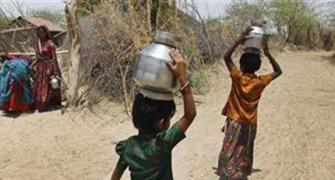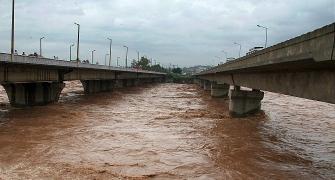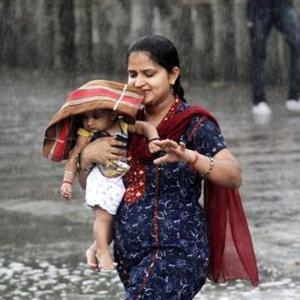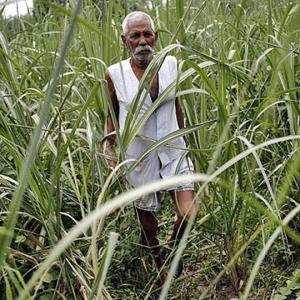Scientists who study the monsoons tell us that they are beginning to make that distinction between 'normal' monsoons and what is now showing up in terms of abnormal extreme rain events, notes Sunita Narain
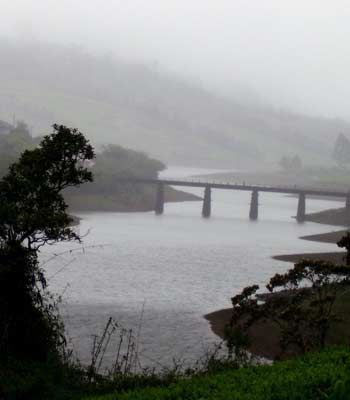 Every year, like clockwork, India is caught between the spectre of months of crippling water shortages and drought and months of devastating floods.
Every year, like clockwork, India is caught between the spectre of months of crippling water shortages and drought and months of devastating floods.
In 2014, there has been no respite from this annual cycle. But something new and strange is indeed afoot.
Each year, the floods are growing in intensity.
Each year, the rain events get more variable and more extreme.
Each year, economic damages increase -- and once again, development gains are lost in one season of flood or bad drought.
Scientists now say conclusively that there is a difference between weather and its natural variability and climate change, a pattern brought about by human emissions that is heating up the atmosphere faster than normal.
Scientists who study the monsoons tell us that they are beginning to make that distinction between 'normal' monsoons and what is now showing up in terms of abnormal extreme rain events.
This, remember, when the monsoons are an extremely capricious and confounding natural event, hard to predict and even harder to pin down.
But, even then, scientists can find the change.
All this is further complicated by the fact that multiple factors affect the weather and another set of multiple factors affects its severity and impact.
In other words, the causes of devastation following extreme events -- like droughts or floods -- are often complicated, and involve mismanagement of resources and poor planning.
For instance, we know floods of the sort that are currently ravaging parts of Northern India are caused by unusually high rainfall.
But it is also clear we have destroyed drainage in floodplains through mismanagement.
We build embankments believing we can control the river, only to find the protection broken.
Worse, we build habitations on the floodplains.
Similarly, urban India is mindless about drainage: Storm water drains are either clogged, full of garbage and sewage, or just do not exist.
Our lakes and ponds have been eaten away by real estate, since land is what the city values, not water.
In all this, what happens when extreme rainfall events happen? The city drowns.
This makes for a double whammy:
On the other hand, climate change is beginning to make the country even more vulnerable, because of the increased frequency of extreme weather events.
The disaster that shook the mighty Himalayas in 2013 was a deadly combination of these two factors.
The Himalayas is the world’s youngest mountain range, prone to landslide and flash floods.
But what we do not easily comprehend is that two factors have made the already vulnerable region more hazardous.
One, climate change-related extreme weather events; the Indian monsoon has become more intense.
Studies show extreme rain events are becoming more frequent as compared to moderate rain events.
Rainfall is also becoming variable and unseasonal.
This is what happened in Uttarakhand on that fateful June 16.
It rained without a break; some 200 millimetres came down within hours at a few places like Kedarnath.
It brought down the mighty Himalayas.
Rain was also unseasonal.
June is still not considered the beginning of the monsoon season, so pilgrims and tourists thronging the region were caught unawares.
The way ahead is to respect the vulnerability of the region.
It cannot be anybody’s contention that the Himalayan region must not see development.
The question to consider is how it should develop: By building roads and hydropower projects, or through local economies based on tourism, which do not work against nature.
It is also a fact that the changing monsoon pattern will require us to optimise the use of every drop and not allow rain to become devastating floods.
Only then will the Himalayan tragedy not be repeated.
Indians know that the monsoon is the real finance minister of India.
Clearly the opportunity is to make sure that every drop of this rain is harvested and used in the prolonged dry season.
But this rain will arrive in more ferocious events -- which also means that the engineering to capture it across the country must be better.
We must plan for drainage so that when rain comes it can be channelised and optimised.
Holding and channelising rain must become the nation’s mission.
It is our only way to the future.
This means that every water body, every channel and every catchment of rain has to be safeguarded.
These are the temples of modern India. Built to worship rain.


